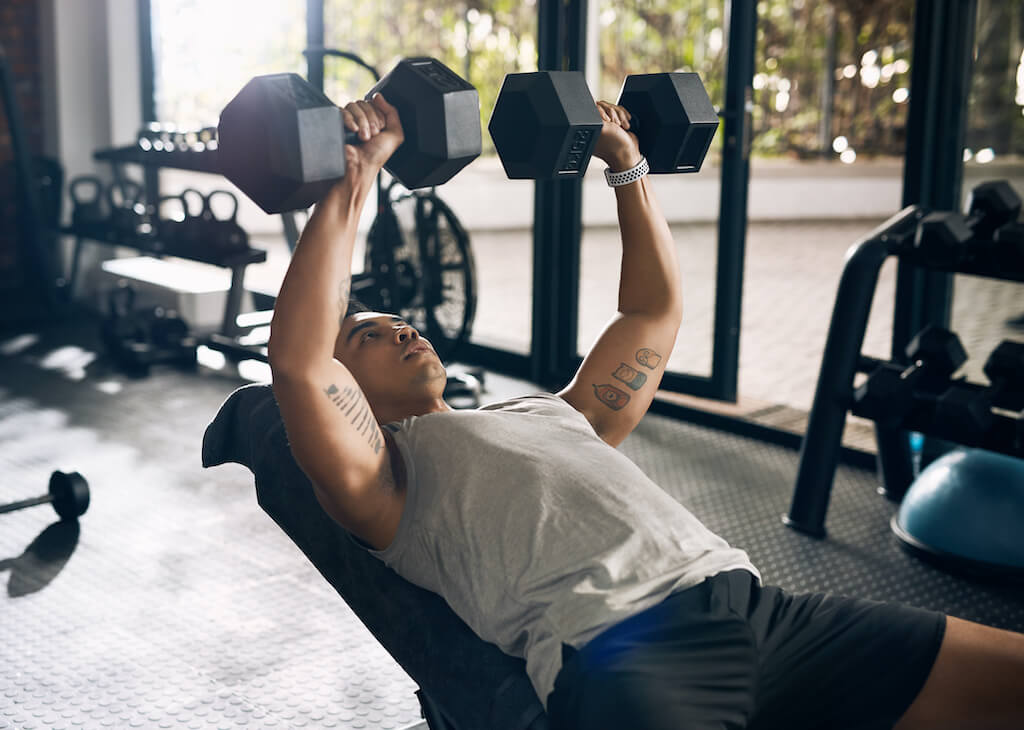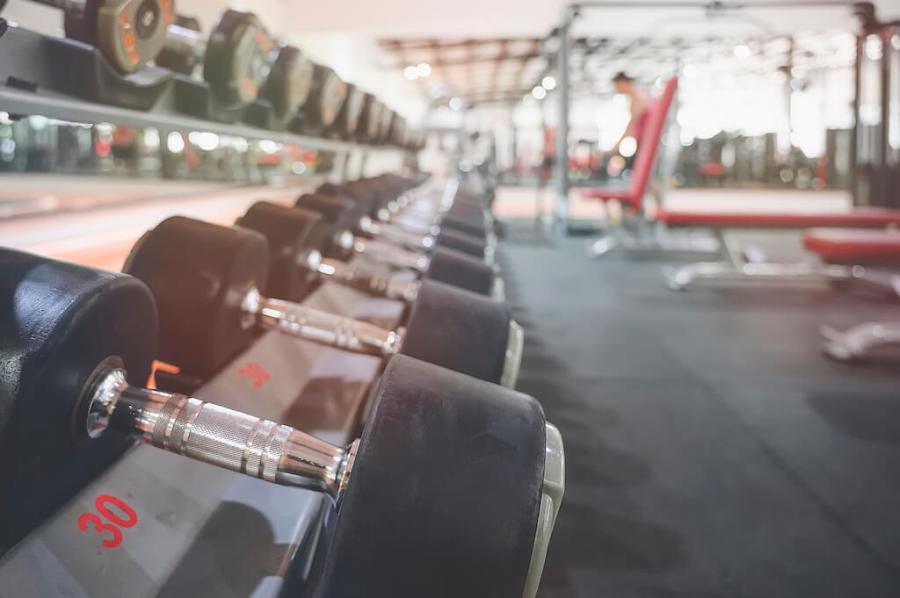Shake up tired routines and break through training plateaus with these advanced methods for maximising muscle gain.

Tri Sets
WHAT: Three moves done back to back with little or no rest, usually targeting the same muscle or group of muscles.
WHY: Typically, you would use these to fully exhaust a single body part, but you could also use them to work two or three body parts efficiently, if you’re short on time.
HOW:
- Do the biggest lift first, followed by the isolation-style moves.
- Bench press, followed by dumbbell bench and then dumbbell flyes would be a good example of a chest tri-set.
Giant Sets
WHAT: Multiple sets of different moves done back to back with little or no rest. In contrast to supersets, which often target antagonistic (opposing) muscles, giant sets are usually composed of four or five moves targeting one part of the body.
WHY: Giant sets will kick-start stubborn muscles into growth, but also burn some fat because of the high work rate.
HOW:
- There are different protocols, but one of the most effective is to follow a power move with a heavy strength move and then a pair of smaller moves.
- For example, jump squat, heavy back squat, dumbbell squat, dumbbell lunge.

GVT
WHAT: German Volume Training is a system popularised by the renowned strength coach Charles Poliquin that uses a couple of moves per workout for very high volumes of work: usually 10 sets of 10 reps.
WHY: It’s a good way to combine strength and hypertrophy, although it’s especially taxing on the lifter’s recovery system.
HOW:
- Pick a pair of lifts that complement each other: bench press and chin-up, for instance.
- Do 10 reps of the first move, rest for 60 secs, then do 10 reps of the second and rest another 60 secs.
- Keep going until you’ve done 100 reps of both.
Drop Sets
WHAT: A set structure beloved of Arnold Schwarzenegger in which you lift to near-failure, then take some weight off the bar or grab a lighter dumbbell and do some more reps.
WHY: Drop sets push your muscles past the point where they would normally fail, nudging them into growth.
HOW:
- As above.
- For an even tougher option, try a triple drop set (going to failure and reducing the weight twice).
- Or, if you’ve only got a single set of dumbbells, for instance, do a technical drop set: regular curls followed by hammer curls is a classic.
Pyramid Sets
WHAT: Starting light and then upping the weight in each successive set, dropping the reps to compensate.
WHY: It’s a way to build your warm-up into your main workout, and also ensures that you get in a decent amount of volume.
HOW:
- Start with a weight that’s manageable for around 10 reps, and lift.
- In your next set, up the weight but go for 8 reps, then continue for 6, 4 and finally 2 reps.
- That’s an ascending pyramid: if you want to add even more muscle-building volume, continue by reversing the process back to 10.
Cluster Sets
WHAT: Sets done with short, built-in pauses, usually taking around 5 to 20 secs. A typical cluster might be a set of 2-2-2-2 reps, so you do a total of 8 reps but pause for 10 seconds after every other rep.
WHY: It allows for extra volume at a heavier weight than would usually be possible.
HOW:
- Pick a weight that you would usually be able to handle for 3 to 5 reps, lift for 2, then take a short break.
- Don’t do this for more than one or two big moves per workout.








